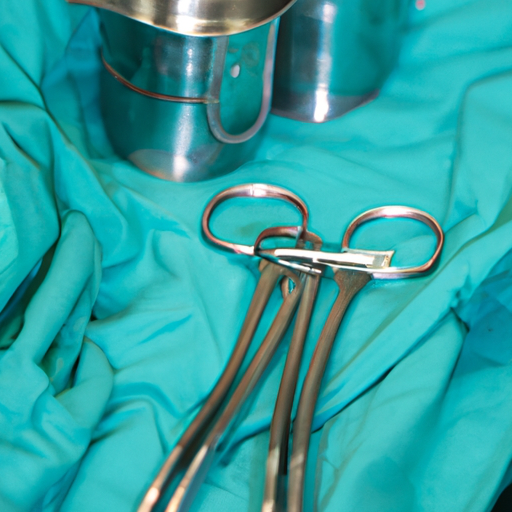Prostate removal, also known as prostatectomy, is a surgical procedure that involves the removal of the prostate gland. This article aims to provide a comprehensive understanding of prostate removal, including its diagnosis, symptoms, causes, and treatment options. We will delve into the various surgical procedures and alternative treatments available for prostate removal, as well as the recovery process and potential side effects. Additionally, we will discuss the long-term outlook for individuals who have undergone prostate removal. Whether you are seeking information for yourself or a loved one, this article will serve as a valuable resource to better comprehend the complexities of prostate removal and its impact on one’s quality of life.
1. Understanding Prostate Removal: Diagnosis, Symptoms, and Causes
Prostate removal, also known as prostatectomy, is a surgical procedure performed to remove the prostate gland in men. This article aims to provide a comprehensive understanding of prostate removal by discussing its diagnosis, symptoms, and causes.
Diagnosing prostate issues is crucial for determining whether prostate removal is necessary. The most common diagnostic tool is the prostate-specific antigen (PSA) blood test, which measures the levels of PSA in the bloodstream. Elevated PSA levels can indicate potential prostate problems, including prostate cancer. However, it is important to note that an elevated PSA level does not necessarily mean cancer is present, as other factors can also cause an increase in PSA levels.
If the PSA levels are concerning, further diagnostic tests may be recommended, such as a digital rectal examination (DRE) or a prostate biopsy. During a DRE, a healthcare professional inserts a gloved finger into the rectum to feel the prostate gland for any abnormalities, such as lumps or irregularities. A prostate biopsy involves taking small tissue samples from the prostate gland to analyze for the presence of cancer cells.
Symptoms of prostate issues can vary depending on the specific condition. Some common symptoms include frequent urination, difficulty starting or stopping urination, weak urine flow, blood in the urine or semen, erectile dysfunction, and pain or discomfort in the pelvic area. However, it is important to note that these symptoms can also be indicative of other conditions, and further testing is necessary to confirm the diagnosis.
Prostate removal is primarily performed to treat prostate
2. Treatment Options for Prostate Removal: Surgical Procedures and Alternatives
When it comes to treating prostate issues, one of the common options recommended by doctors is prostate removal. This surgical procedure, also known as a prostatectomy, involves the complete removal of the prostate gland. Prostate removal may be recommended for several reasons, including the presence of prostate cancer, benign prostatic hyperplasia (BPH), or other prostate conditions that are causing significant symptoms or complications.
There are different surgical procedures available for prostate removal, each with its own advantages and considerations. The choice of procedure depends on various factors such as the patient’s overall health, the extent of the prostate condition, and the presence of any other underlying medical conditions. Let’s take a closer look at the surgical procedures commonly used for prostate removal, as well as some alternative options.
1. Radical Prostatectomy:
This is the most common surgical procedure for prostate removal, particularly in cases of prostate cancer. Radical prostatectomy involves the complete removal of the prostate gland, along with the surrounding tissues and nearby lymph nodes. The procedure can be performed through different approaches, including open surgery, laparoscopic surgery, and robotic-assisted laparoscopic surgery. Each approach has its own advantages and disadvantages, and the choice depends on the surgeon’s expertise and the patient’s specific circumstances.
2. Transurethral Resection of the Prostate (TURP):
TURP is a surgical procedure primarily used for the treatment of BPH, a non-cancerous enlargement of the prostate gland. This procedure involves the removal of
3. Life After Prostate Removal: Recovery, Side Effects, and Long-Term Outlook
After undergoing prostate removal surgery, a man’s life can significantly change. It is essential to understand the recovery process, potential side effects, and the long-term outlook to ensure a smooth transition and optimal quality of life.
Recovery after prostate removal surgery, also known as prostatectomy, varies from person to person. Typically, patients can expect to spend a few days in the hospital before being discharged. During this time, they may experience discomfort, pain, or temporary urinary incontinence. The medical team will provide detailed instructions on post-operative care, including pain management, wound care, and activities to avoid.
In the initial weeks following surgery, it is crucial to take it easy and gradually resume daily activities. Patients are advised to avoid heavy lifting, intense exercise, and sexual activity for a period determined by their surgeon. While some individuals may recover quickly, others may require several weeks or even months to regain their strength fully.
One of the most common side effects of prostate removal surgery is erectile dysfunction (ED). The prostate gland plays a vital role in sexual function, and its removal can disrupt nerve and blood vessel pathways necessary for achieving and maintaining an erection. However, it is important to note that not all patients experience ED, and the severity can vary. There are various treatment options available to manage this condition, including medications, vacuum erection devices, penile implants, and counseling.
Another potential side effect of prostate removal is urinary incontinence. This occurs when a man has difficulty controlling his bladder, leading to occasional or frequent

